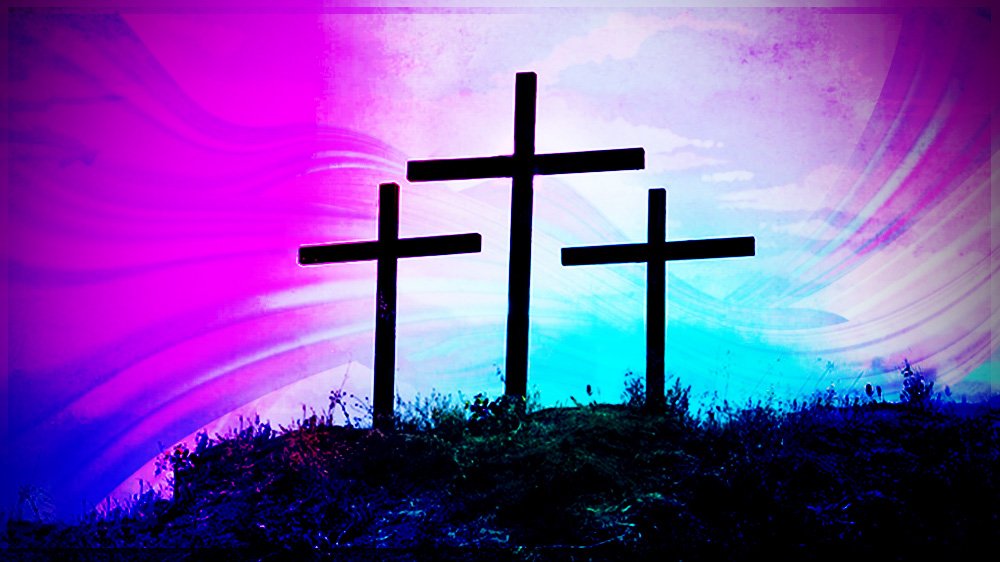When I started my transition, my goal wasn’t to find a magic pill that would solve all of life’s challenges. I knew that I would continue to face immense challenges, especially in a transphobic social and political climate. But I wanted the opportunity to live my life in a body that felt like home.
For many years, I identified myself as “gender nonconforming.” I existed somewhere between the strict performances of “man” and “woman” that unfolded on the daily stage around me. I felt so uncomfortable in the role assigned to me that initially I felt safe in the middle. I felt safe in the gray area. But that gray area wasn’t home.
Most of my life I was surrounded by primarily conservative Catholics, and I knew that identifying as transgender would be a huge issue for the community. Queerness is viewed negatively in those circles and I have to carry that cross.
But the Way of the Cross is not about secrets, but about radical love. Yes, it’s about others, but it’s also about yourself. Jesus did not hide who He was when the crowds loved Him, and He did not hide Who He was when the crowds were against Him. Queer Catholics, like all Catholics who follow the path of Jesus, deserve the opportunity to live with the authenticity and truth of who they are.
I spent years watching my own behavior to avoid expressing myself naturally for fear of being found out as LGBTQ. This may have made some people feel better, but I have never been able to truly connect with anyone, Catholic or not. Staying in the closet may have been helpful in avoiding what others saw as an awkward conversation, but for me it was suffocating. My personality was buried behind the walls I built to keep my queerness contained.
We all know what it feels like to sometimes behave in a way that makes us feel less like the real person we are. The difference is, for queer people, that’s almost always what’s expected of us.
The Pope recently said that “gender ideology” is ugly. This phrase regards modern scientific understanding as explicitly targeting traditional values without taking into account spiritual revelation. Why should new evidence be perceived as a threat? Why should transgender people trying to live their lives in the 21st century be labeled as ideological?
The work of the Holy Spirit can never be suppressed by dualistic thinking. Mystics, from Meister Eckhart and St. Catherine of Siena in the Middle Ages to Richard Rohr and Ilia Derio today, know this well. We believe in a Triune God, a Triune God with Trinitarianism, not dualism. This human world we live in exists as a manifestation of the love of the Triune God, so powerful that we are all born into it. We are visible signs of that love.
Transgender people make their inner reality visible. We experience a deep knowledge of ourselves, which becomes concrete as we transition. And for cisgender people, living out their unique calling to be themselves in the physical world is a great spiritual gift that transcends physical reality.
Jesus entered the world through embodiment through the incarnation. Fulfilling his calling of love led him to die on the cross. It was not the end, but the embodiment of the truth of our eternal souls through the resurrection.
Looking deeply into the life of Jesus means looking deep into the mirror, not looking for perceived shortcomings, but looking back at us to see the face of Jesus. If we look deeply at the life, death, and resurrection of Jesus, we will see that these stages are not isolated from each other. There is ultimate unity in the life of Jesus. Similarly, there is oneness in our life stories.
None of us exist on this earth by chance. The words of Jeremiah 1:5 apply to all of us. “Before I formed you in the womb I knew you, and before you were born I sanctified you and appointed you a prophet to the nations.”
We all have access to this divine grace and birthright and this opportunity to embody the love from which we come. And as we continue to explore this mystery in our own lives, perhaps we can learn something about physicality from the transgender people among us.

